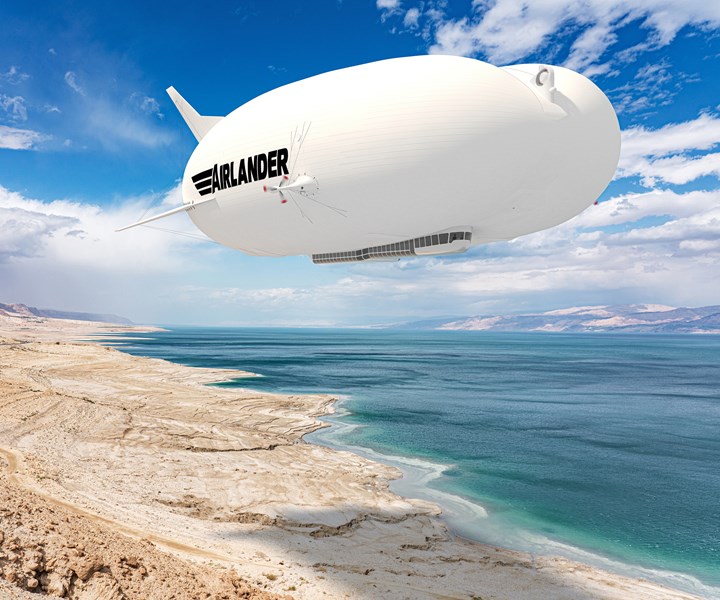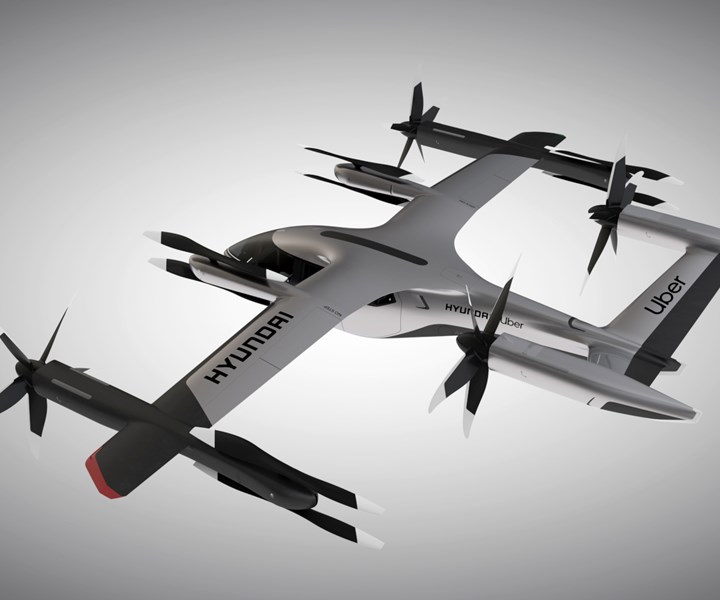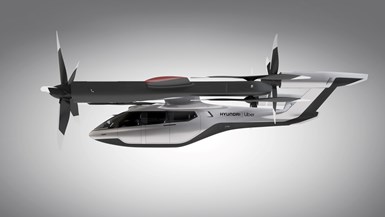CompositesWorld News for Jan. 14, 2020
Read news from EconCore, SGL Carbon SE, and Kanfit
Low & Bonar licenses EconCore’s thermoplastic honeycomb technology
Using EconCore’s honeycomb technology, Low & Bonar has developed a lightweight flooring underlay product designed for high acoustic properties.

A close-up view of Colcore Sonic, showing the relaxed honeycomb core with non-woven performance fabrics. Source | Low & Bonar and EconCore
Advanced fabrics company Low & Bonar (London, U.K.) has signed a license agreement for the use of EconCore’s (Leuven, Belgium) thermoplastic honeycomb technology. At the Domotex trade show in Hannover, Germany (Jan. 10-13, 2020), Low & Bonar launched a new flooring flooring product using EconCore’s honeycomb technology.
The product, called Colcore Sonic, uses EconCore’s continuous, high-volume production process for lightweight thermoplastic honeycomb sandwich panels. Colcore Sonic is deliverable on a roll, rather than as a rigid panel, for easy handling, storage and installation, and it is said to be lightweight and thin while exhibiting strong soundproofing and high compression strength properties.
The new product concept was developed in 2018, followed by a series of testing, learning and further optimization. Relevant industry qualification tests were achieved to demonstrate the product meets and exceeds industry standards, Low & Bonar says.
Independent testing found that Colcore reduced impact sound by 20 decibels and airborne sound transmission is 57 decibels, both defined as the noise perceived in a room below. Radiated walking sound, defined as walking noise in the same room, registered at 56.4 Sone (a unit of loudness), considered to be a comfortable sound level. The results demonstrate that the product is ideal for flooring of both, commercial and residential buildings.
“Even with the latest generation of leveling compounds, preparing subfloors prior to the installation of vinyl click flooring is time-consuming. Unrolling, cutting and positioning this high-performance underlay system is all it takes to smooth out uneven surfaces in minutes rather than hours or days,” says Soon Joo Bovenschen, new technology manager at Low & Bonar.
“This license agreement and the subsequent successful product development is a result of intensive work and an excellent partnership between EconCore and Low & Bonar,” says Tomasz Czarnecki, chief operating officer at EconCore.
Hybrid Air Vehicles unveils production Airlander 10 model
This is a step toward commercial production and type certification for the electric-propulsion, helium-filled, hybrid aircraft.

Airlander 10. Source | Hybrid Air Vehicles Ltd.
On Jan. 11, Hybrid Air Vehicles (HAV, Shortstown, Bedford, U.K.) unveiled the production model of its Airlander 10, a step toward commercial production and type certification for the helium-filled hybrid aircraft. The company says that negotiations with commercial customers are ongoing.
For background on the Airlander 10 and its composite components, see the post “Luxury travel by airship returns.”
According to HAV, the updated aircraft includes enhancements such as a fuel-saving, lower-drag shape; enhanced landing gear; wider, and a longer cabin for passengers, cargo and equipment. These features, HAV says, will provide the flexibility needed to deliver the experiences the commercial market wants to offer to its customers.
The production aircraft is designed to deliver increased efficiency, with the Airlander 10 reportedly producing up to 75% fewer emissions than comparable aircraft. An electric propulsion system with a goal of zero-carbon aviation is being developed with partners Collins Aerospace (West Palm Beach, Fla., U.S.) and the University of Nottingham (Nottingham, U.K.).
HAV is currently in contract negotiations for the Airlander 10’s first four production slots, based on signed letters of intent for more than 10 aircraft with organizations in the tourism and clean technology sectors.
As HAV approaches the launch of the production and type certification program, the company is also working to secure funds for a new production facility.
SGL Carbon to build composite battery enclosures for North American automaker
The company will produce carbon and glass fiber-based composite top and bottom layers for battery enclosures.

Source | SGL Carbon
SGL Carbon (Wiesbaden, Germany) reported on Jan. 13 that it has received a contract from a North American automaker for high-volume serial production of carbon and glass fiber-based composite top and bottom layers for battery enclosures, with production expected to begin the end of this year. The carbon fibers and fabrics, and the assembled components, will come from SGL Carbon’s fully integrated value chain.
The battery enclosure is a key part of an electric car’s chassis platform, the company says. Typically, this enclosure occupies most of the space in the underfloor of the chassis, and has specific requirements for weight, stiffness, impact protection, thermal management, fire protection, and water and gas impermeability. SGL Carbon says composite materials meet these requirements better than any other materials.
This contract follows the successful production of composite battery case prototypes for Chinese automotive manufacturer NIO announced last year.
The company says there is also the potential for more orders with this manufacturer for even more substantial volumes. In addition, SGL Carbon announces that it has also won a smaller volume contract from a European sports car manufacturer to serially produce bottom layers made of composite, to begin mid-2020, with more potential customers in electric car manufacturing in development.
“Driven by the increasing need for [electric cars] worldwide and thus for new flexible chassis platforms, our composite battery enclosures are a very promising new application in our product portfolio,” says Sebastian Grasser, head of the automotive segment at the Composites – Fibers & Materials business unit at SGL Carbon. “The recent contract wins show that our approach of developing custom-made solutions based on our integrated value chain offers an excellent value proposition.”
Hyundai Motor Co., Uber unveil air taxi model
At the Consumer Electronics Show (CES), the companies announced an aerial ridesharing partnership and a new eVTOL design.

Source | Hyundai Motor Co. and Uber Elevate
On Jan. 6 at the Consumer Electronics Show (CES, Las Vegas, Nev., U.S.), rideshare company Uber (San Francisco, Calif., U.S.) and aHyundai Motor Co. (Seoul, South Korea) unveiled a full-scale air taxi concept and announced a new partnership to develop air taxis for use in a planned future aerial rideshare network.
Hyundai is the first automotive company to join the Uber Elevate initiative, with plans to bring its automotive-scale manufacturing capability and a track record of mass-producing electric vehicles. The air vehicle concept Hyundai released at CES was created in part through Uber’s open design process, a NASA-inspired approach that jump-starts innovation by publicly releasing vehicle design concepts so any company can use them to innovate their air taxi models and engineering technologies.

Source | Hyundai Motor Co. and Uber Elevate
Through this partnership, Hyundai will produce and deploy air vehicles, and Uber will provide airspace support services, connections to ground transportation and customer interfaces through an aerial ride share network. Both parties are collaborating on infrastructure concepts to support take-off and landing for this new class of vehicles.
Hyundai has worked with Uber Elevate to develop the S-A1 personal air vehicle (PAV) model, which is intended to optimize electric vertical take-off and landing (eVTOL) aircraft for aerial ridesharing purposes.
According to the companies, the S-A1 model unveiled at CES:
- is designed for a cruising speed up to 180 miles per hour (290 kilometers per hour), a cruising altitude of around 1,000-2,000 feet (300-600 meters) above ground, and to fly trips up to 60 miles (100 kilometers);
- will be 100% electric, utilizing distributed electric propulsion and during peak hours will require about five to seven minutes for recharging;
- utilizes distributed electric propulsion, powering multiple rotors and propellers around the airframe to increase safety by decreasing any single point of failure;
- is designed to take off vertically, transition to wing-borne lift in cruise, and then transition back to vertical flight to land;
- will be piloted initially, but over time will become autonomous; and
- is designed with a four-passenger cabin.
“Our vision of urban air mobility (UAM) will transform the concept of urban transportation,” says Jaiwon Shin, executive vice president and head of Hyundai’s Urban Air Mobility Division. “We expect UAM to vitalize urban communities and provide more quality time to people. We are confident that Uber Elevate is the right partner to make this innovative product readily available to as many customers as possible.”
“Hyundai is our first vehicle partner with experience of manufacturing passenger cars on a global scale. We believe Hyundai has the potential to build Uber Air vehicles at rates unseen in the current aerospace industry, producing high quality, reliable aircraft at high volumes to drive down passenger costs per trip. Combining Hyundai’s manufacturing muscle with Uber’s technology platform represents a giant leap forward for launching a vibrant air taxi network in the coming years,” says Eric Allison, head of Uber Elevate.
Kanfit Ltd. moves to larger manufacturing facility
The 11,000-square-meter facility in northern Israel includes expanded manufacturing space for Kanfit’s aerospace parts and assemblies.

Source | Kanfit Ltd.
Aerospace engineering company Kanfit Ltd. (Nof Hagalil, Israel) reported on Jan. 14 that it has moved into a new facility in the Tsiporit Industrial Park in Northern Israel. According to the company, the 11,000-square-meter (118,000-square-foot) facility, which is approximately triple the size of its previous facility, will enable it to expand product and service offerings to meet customer demands. Kanfit manufactures primary and detailed parts, sub-assemblies, and fit and fly assemblies made from composites and metal, and the integration of both.
The new building provides more manufacturing, cleanroom, paint room and laboratory space, as well as a larger warehouse and more offices for staff. In addition, there will be a new chemical processing line for Alodine, with the infrastructure to add additional chemical processes in the future.
“Our spacious new building has been designed to improve operations, streamline manufacturing, increase efficiency and support innovation in the engineering and manufacturing of high-quality aerospace products,” says Shai Fine, general manager of the company.
Reported in November 2019, Kanfit also recently entered into a partnership with Israeli defense contractor Rafael Advanced Defense Systems. Rafael acquired a 50% stake in Kanfit, a private company owned by Shai and Shula Fine.
Related Content
Plant tour: Joby Aviation, Marina, Calif., U.S.
As the advanced air mobility market begins to take shape, market leader Joby Aviation works to industrialize composites manufacturing for its first-generation, composites-intensive, all-electric air taxi.
Read MoreInfinite Composites: Type V tanks for space, hydrogen, automotive and more
After a decade of proving its linerless, weight-saving composite tanks with NASA and more than 30 aerospace companies, this CryoSphere pioneer is scaling for growth in commercial space and sustainable transportation on Earth.
Read MoreMaterials & Processes: Fibers for composites
The structural properties of composite materials are derived primarily from the fiber reinforcement. Fiber types, their manufacture, their uses and the end-market applications in which they find most use are described.
Read MoreA new era for ceramic matrix composites
CMC is expanding, with new fiber production in Europe, faster processes and higher temperature materials enabling applications for industry, hypersonics and New Space.
Read MoreRead Next
Composites end markets: Energy (2024)
Composites are used widely in oil/gas, wind and other renewable energy applications. Despite market challenges, growth potential and innovation for composites continue.
Read MoreFrom the CW Archives: The tale of the thermoplastic cryotank
In 2006, guest columnist Bob Hartunian related the story of his efforts two decades prior, while at McDonnell Douglas, to develop a thermoplastic composite crytank for hydrogen storage. He learned a lot of lessons.
Read MoreCW’s 2024 Top Shops survey offers new approach to benchmarking
Respondents that complete the survey by April 30, 2024, have the chance to be recognized as an honoree.
Read More













.jpg;maxWidth=300;quality=90)















